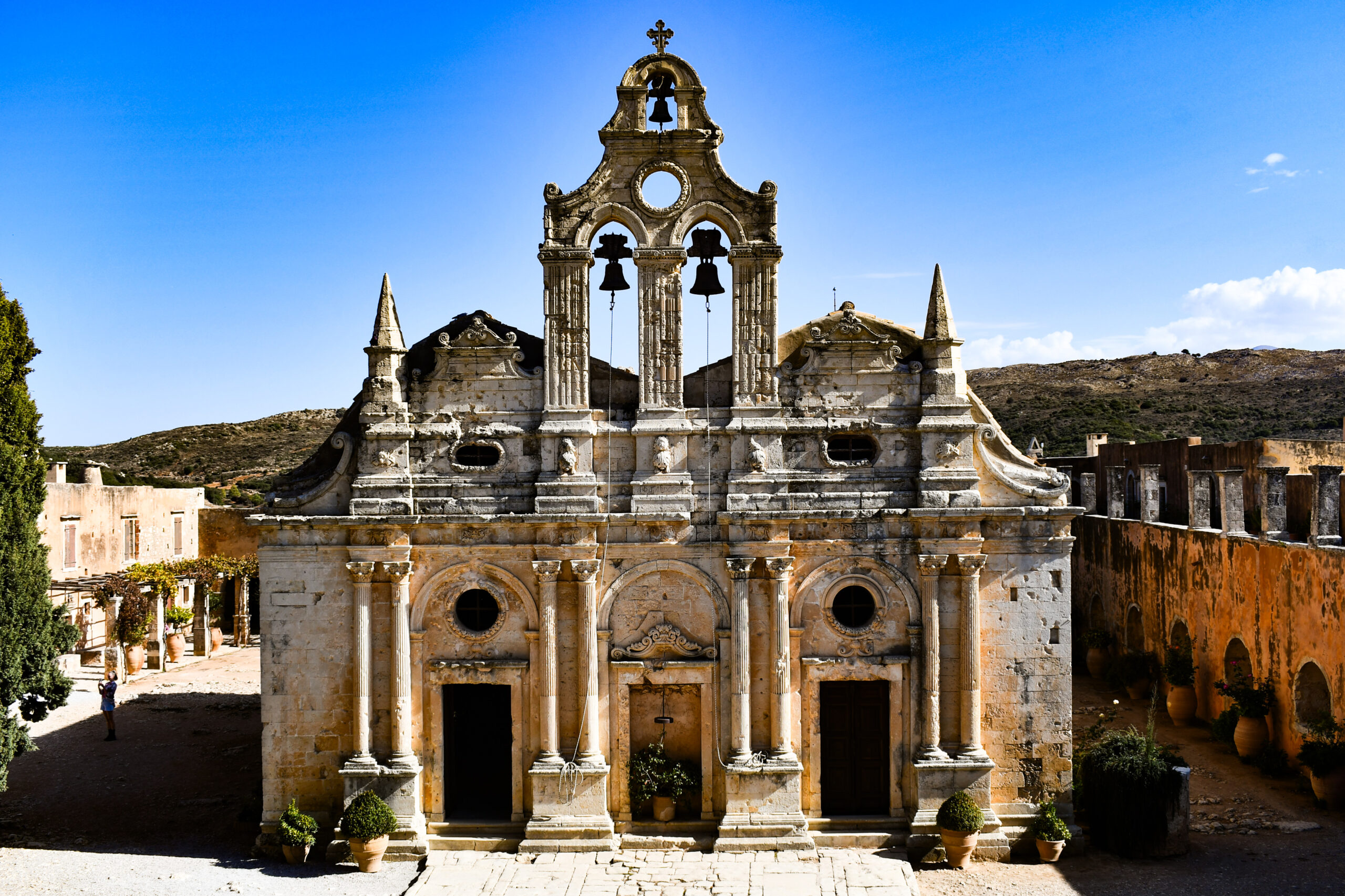
The Arkadi Monastery, situated high in the rugged hills of Crete, Greece is believed to have been founded around the 11th century AD, by a monk named Arkadios. It was and was initially dedicated to St. Constantine and St. Helen. Initially the monastery, which was dedicated to St. Constantine and St. Helen consisted of a small church with a few small cells which served as living quarters for the monks there.
In 1587, the small church was replaced by a larger, majestic, double-aisle church and by 1600, the fortress-style monastery was completed into what is its current form. Very few changes have been made over the years.
The monastery was known for a variety of reasons over the centuries. For instance, during the 17th century, the monastery was well-known as a manuscript copy center, many of which are preserved and on display in the Museum of the Monastery.


In the 18th century, the monastery became a gold work embroidery workshop. The workshop embroidered ecclesiastical fabrics and vestments which were sold to churches all over the world. Many of these are also on display at the monastery museum.





Yet the monastery is most well known for its role in the revolution against its Ottoman occupiers. The Ottomans, largely based in modern day Turkey, were characterized by oppression, and brutal rule. Their legal system was based on Islamic law with harsh punishments for minor crimes and often used torture and executions as a means of deterring dissent.



In 1866, at the onset of the Cretan Revolution, 964 people, including fighters, and people from nearby villages sought shelter in the monastery to protect themselves against the Ottoman army. After a two-day siege and intense fighting, in which hundreds were killed, the remaining people retreated to the room serving as the armory. Rather than surrender and face likely torture and execution, the remaining people; men, women, children, and monks decided to make the ultimate sacrifice and blew themselves up.
Today, the bones of those who lost their lives are kept in the monastery’s old windmill with the skulls of some of the victims on display neatly in a glass cabinet.


Arkadi Monastery now serves as a national sanctuary in honor of the Cretan resistance, Those who perished in the explosion left behind a legacy that is honored each year on the anniversary of the event, when Cretans gather to remember those who gave their lives for the cause of independence.










